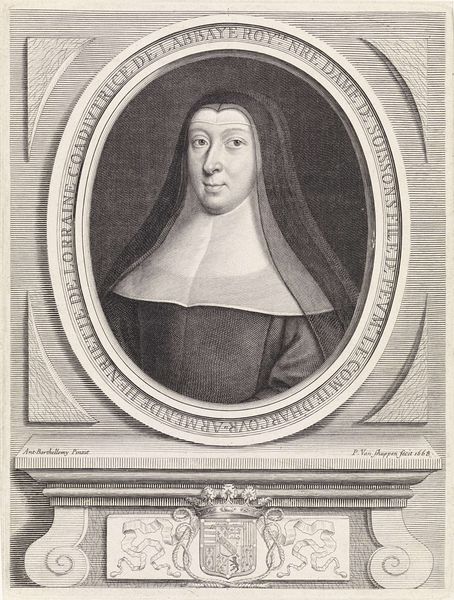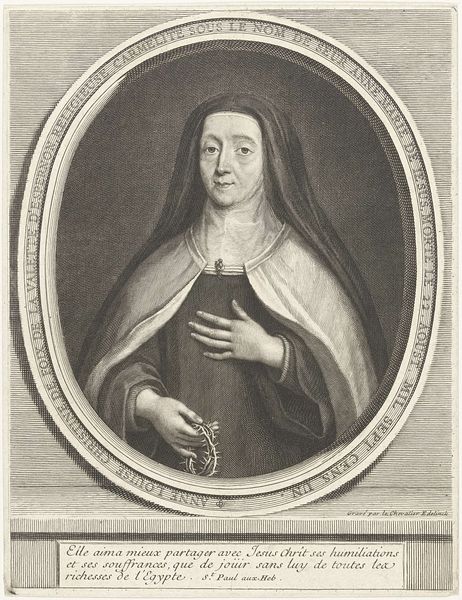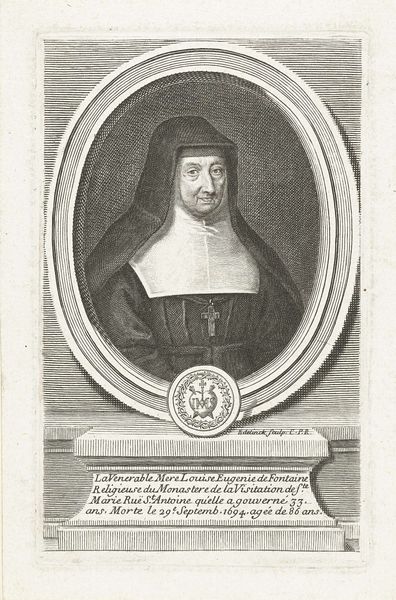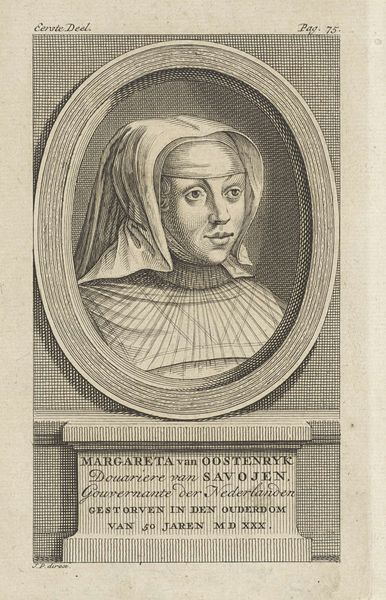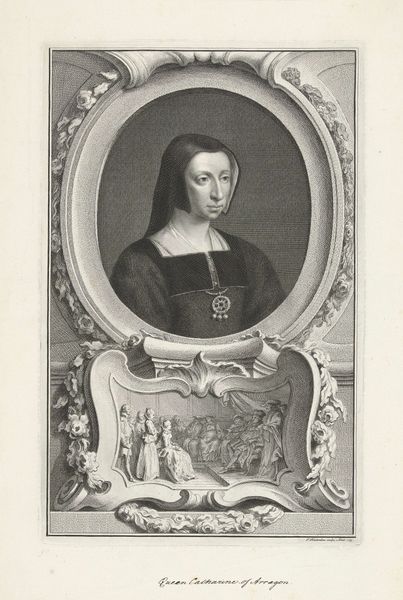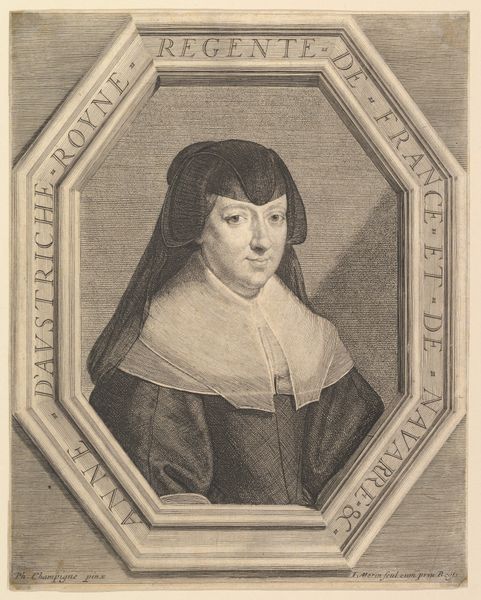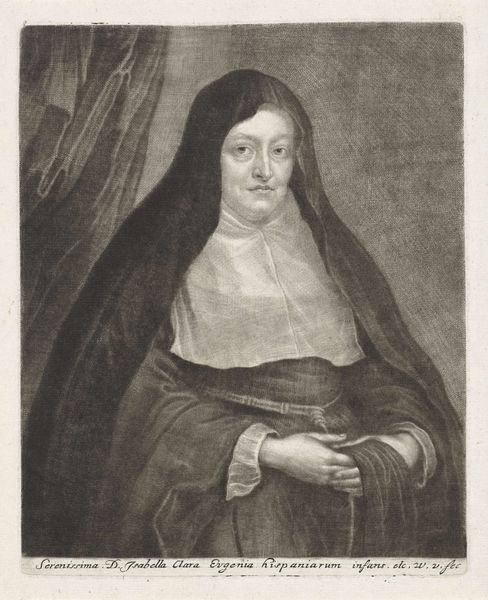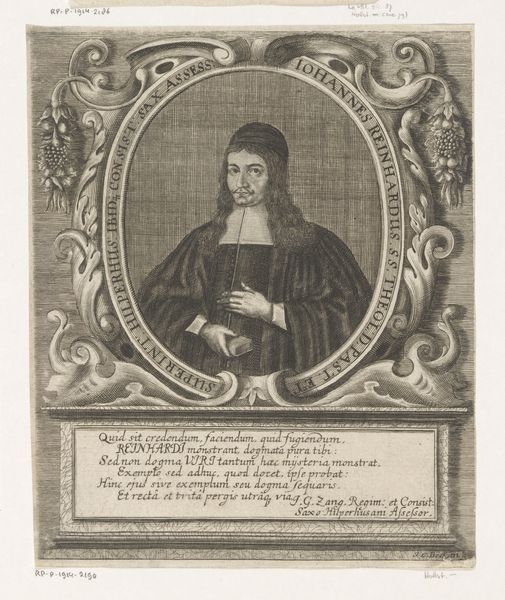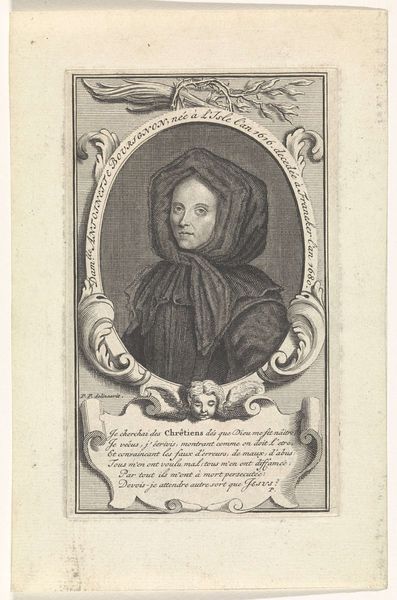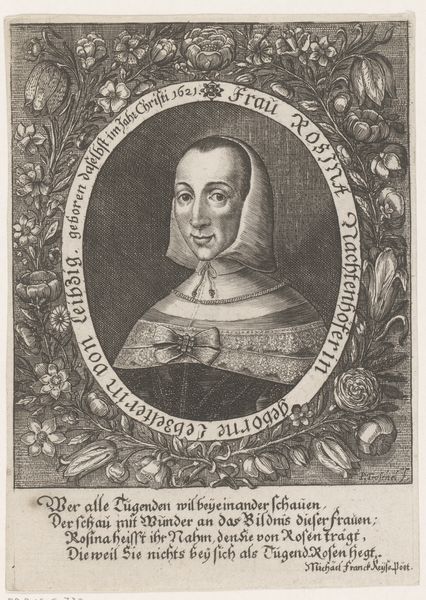
print, engraving
#
portrait
#
baroque
# print
#
old engraving style
#
personal sketchbook
#
engraving
Dimensions: height 149 mm, width 100 mm
Copyright: Rijks Museum: Open Domain
Editor: This is "Portret van Françoise de Vassé," a print made by Gérard Edelinck sometime between 1694 and 1707. It has a formal, almost austere quality to it. The engraving shows a woman in what appears to be a religious habit, framed within an oval. What do you see in this piece? Curator: I see an excellent example of how the Baroque portrait served as a vehicle for projecting social standing, even within a religious context. Françoise de Vassé was the Prioress of a monastery, and the portrait commemorates her leadership. The inclusion of the family crest reinforces her noble lineage. Editor: So, it's about more than just religious piety? Curator: Exactly. Consider who this image was *for*. Prints like these circulated widely, often serving to reinforce social hierarchies. This wasn't simply a personal memento; it was a public statement about the Church's leadership and its connections to established power structures. Notice, for instance, the inscription below the portrait—it’s a form of public record. Does this add another layer to your reading? Editor: Definitely. I was initially focused on the religious aspect, but seeing it as a statement of power changes things. The inclusion of details like her age and length of service further solidify that idea of institutional strength and endurance. Curator: And the artists involved are not to be discounted. Hyacinthe Rigaud did the original portrait that this print replicates. Edelinck’s engraving skills were highly sought after, meaning even in reproduction the sitter's prominence is made evident. Editor: It's fascinating to think about how prints played such a central role in disseminating these carefully constructed images of authority. Curator: Indeed. These images weren’t passively received; they actively shaped public perceptions of power and religious institutions in their time. Editor: This has totally transformed how I understand this portrait, I will certainly never look at prints the same way. Thank you!
Comments
No comments
Be the first to comment and join the conversation on the ultimate creative platform.
